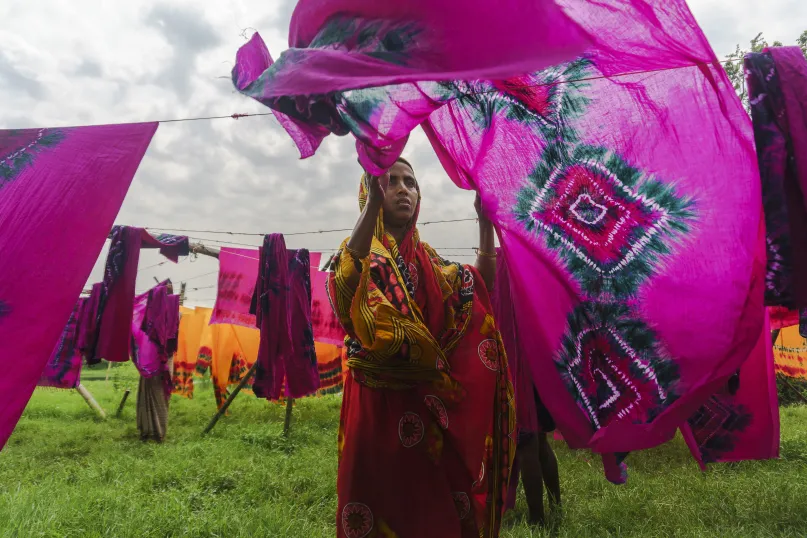Will the Pandemic Exacerbate or Mitigate the Digital Gender Gap?

As the COVID-19 pandemic spread across the world, economies were forced into lockdown to help slow the transmission of the virus. These measures had a devastating effect on livelihoods, particularly those of low-income households, and women, who face a unique set of challenges. The pandemic has deepened the gender divide along income, assets, jobs and livelihoods.
How COVID-19 has impacted women
New research examines how the COVID-19 outbreak has disproportionately affected women, who faced significant challenges before the pandemic. Among the effects on women are:
- Higher exposure to risk as women are more likely to work as front-line health workers and caregivers.
- Greater vulnerability to economic uncertainty.
- Increased intimate partner violence.
- Barriers to sexual and reproductive healthcare.
- A larger drop in the mobility of women relative to men, jeopardizing their employment and business opportunities.
- Negative coping strategies, such as distressed sale of assets, predatory loans from informal moneylenders and cutting down on essential consumption and meals.
- Reduced access to the social and credit groups which women relied upon for support and solidarity.
Government responses hindered by the digital divide
In response to the crisis, governments stepped up support in the form of cash transfers, food distribution for low-income groups, and temporary employment schemes for casual workers. Targeted cash transfer schemes were particularly popular, distributed through already existing platforms or newly built digital platforms. India distributed $260 billion in cash transfers, and Bangladesh $11.9 billion.
Unfortunately, the gendered digital divide made it harder for women to access these cash benefits. In low-and-middle income countries, women are 8 percent less likely than men to own a mobile phone, and 20 percent less likely to use mobile internet or own a smartphone. Unlocking access to mobile devices remains a fundamental problem due to the cost of phones and internet access, as well as varied regulatory policies such as requirements for e-KYC (know your customer) documentation.
Has women’s digital usage increased during the pandemic?
In Bangladesh, the pandemic brought about an unprecedented increase in digital payments. The number of garment workers, a large portion of whom are women, receiving their wages digitally went from 1.5 to 4 million, a 260 percent increase. Enrollment in digital payments for social safety net payments distributed by banks and non-bank financial institutions jumped from 1.5 to 7.5 million, an increase of 500 percent. Service providers like BRAC also contributed to the increased use of digital finance, fast-tracking digital wallet projects and making digital cash transfers to 575,000 wallets.
Digital payments have surged elsewhere too. MSC’s research shows that women are spending more time on their phones, their use of digital interfaces has increased and they are more inclined to use formal financial services. However, the increase in time women spend on their phones has not resulted in a proportionate increase in the use of DFS; here, the increase remains less than their male counterparts.
What do women need to embrace digital?
This crisis has the potential to accelerate women’s adoption of digital services. But what will it take to bring them into this digital world more fully?
Kajal, a woman from the Odisha state in India, faced the challenge of paying for her son’s rent during the pandemic. She was cornered into going digital as she did not want to risk traveling to the bank in person during the pandemic, and her son encouraged her to pay via mobile app. She was aware of the service and had seen her peers use it, but some coaching from her son gave her the needed push to utilize this digital channel.
Millions of women have a similar experience to Kajal’s, first-time users who were initially resistant to use digital channels. They adopt digital out of necessity, and only with the help of supportive intermediaries. MSC’s research on ‘What does it take to nudge low- and moderate-income population segments to adopt DFS?’ found that first-time users are often apprehensive and intimidated by difficult user interfaces, but a strong use case and the availability of a troubleshooter nudges them to use digital services.
We also found that women face more challenges than men in adopting DFS, including lack of gender centrality in product design and orality skills; hence focused efforts must be made to ensure equitable access.
We must act now to eliminate the digital gender divide
While it is not yet clear what impact COVID-19 will ultimately have on women’s digital adoption, it is clear that we must urgently prioritize women’s digital literacy and access. Connected women represent the potential for a quick recovery - think of a garment factory worker in Bangladesh sharing photos via her smartphone to show management the progress of her work, a female farmer in India checking crop prices on the Internet or a small business owner in Indonesia switching to online bookkeeping. At this moment, we are at a crossroads; we can either allow the crisis to exacerbate the existing gender divide, or act now to accelerate change by supporting millions of women and girls to realize their full potential.
Join us for an engaging session on 11 Nov, 9:00am – 10:30am IST / 10 Nov, 10:30pm – 12:00pm EST as we discuss: “Pandemic in Asia: Women's digital financial services adoption and resilience.” Register here.



Gender gaps in access and usage of digital finance can be detrimental in building economic resilience in low income households or communities.
A more collaborative approach and partnership landscape needs to be created for women centric designs of financial products along with an woman led assisted digital finance platform.
FIA Global, a neo-bank in South Asia is working on solutions targeting women at the bottom of the financial pyramid, leveraging our AI enabled technology platform and network of banks, financial institutions and community partners.
Invite all to come close and collaborate.
Leave a comment